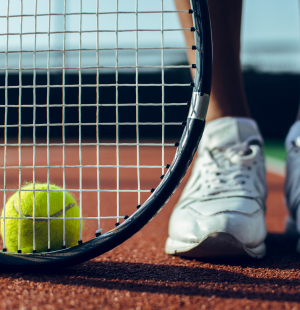
Preventing Burnout and Overtraining
🧠Why Smarter Training, Not Just More Training, Leads to Long-Term Growth
In junior tennis, it’s natural for parents and players to believe that more hours on the court will automatically lead to more success. But when training volume increases without the right balance of rest, recovery, and variety, it can quickly lead to burnout or overtraining—two of the most common reasons young athletes lose motivation, get injured, or quit the sport altogether.
At FOFTA, we take a long-term view of development. Our philosophy is built on the understanding that progress is not just about how hard a player works, but how smartly they train. That’s why we use a science-backed approach called periodization. This system organizes training into structured phases throughout the year to promote steady improvement while protecting the athlete’s health and well-being.
This approach isn’t just for elite players—it benefits every athlete by:
- Keeping training purposeful and age-appropriate
- Allowing time for rest and mental reset
- Aligning physical, technical, and mental goals to the season
- Preventing the physical and emotional wear that leads to dropout
The goal isn’t to push kids to do more. It’s to help them grow stronger, more confident, and more motivated—at the right pace and in the right way. With smarter training, players build not only better performance but also better habits, better health, and a deeper love for the game.

⚠️ What Is Burnout?
Burnout is more than just being tired. It’s a state of emotional, mental, and physical exhaustion caused by too much pressure or repetitive training without adequate breaks. Common signs include:
- Loss of motivation or enjoyment
- Irritability or emotional outbursts
- A decline in performance despite more effort
- Dreading lessons or tournaments
- Wanting to quit or take an extended time off
🛠️ What Is Overtraining?
Overtraining happens when a player’s physical workload exceeds their ability to recover. In developing athletes, this is especially risky and can result in:
- Chronic fatigue or soreness
- Sleep disruption
- More frequent injuries
- Mood swings or mental fog
- Decreased enthusiasm or concentration
🔄 How Periodization Helps Prevent Both
Periodization is a structured training model that breaks the year into distinct phases: preparation, pre-competition, competition, and recovery. Each phase has a unique focus, such as:
- Building a fitness base
- Sharpening technical, strategic, and mental skills
- Practicing match intensity
- Engaging in competition
- Resting and recharging
At FOFTA, we use periodization to:
- Protect players from physical and emotional overload
- Schedule recovery days and “easy weeks” to avoid plateauing
- Align training intensity with the competition calendar
- Keep players motivated by setting clear short-term and long-term goals
This approach ensures your child progresses safely while maintaining a love for the game.
👨👩👧👦 What Parents Can Do to Support Healthy Training
✅ Embrace Rest as Part of the Plan
Recovery isn’t slacking—it’s part of performance. Players improve between sessions, not just during them.
✅ Monitor Your Child’s Energy and Enthusiasm
If your child starts skipping warm-ups, shows frustration more often, or lacks interest, it may be a signal to scale back—not double down.
✅ Avoid Back-to-Back Tournaments or Overbooking
Too much competition in a short window doesn’t allow time for reflection, technical reinforcement, or physical recovery.
✅ Communicate With Coaches
Ask how periodization is being applied to your child’s training schedule and how to support it at home.
🌱 The Big Picture
Your child’s tennis journey is a marathon, not a sprint. With a periodized training plan, built-in rest, and an emotionally healthy environment, they’re more likely to:
- Improve consistently
- Avoid injury
- Stay motivated
- And love the game for the long haul
At FOFTA, we build more than tennis players—we build smart, strong, and balanced young athletes who are in it for the long run.
“Great athletes aren’t the ones who train the most—they’re the ones who train with purpose, recover well, and grow year after year.”
